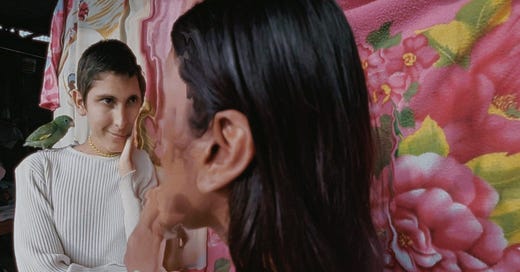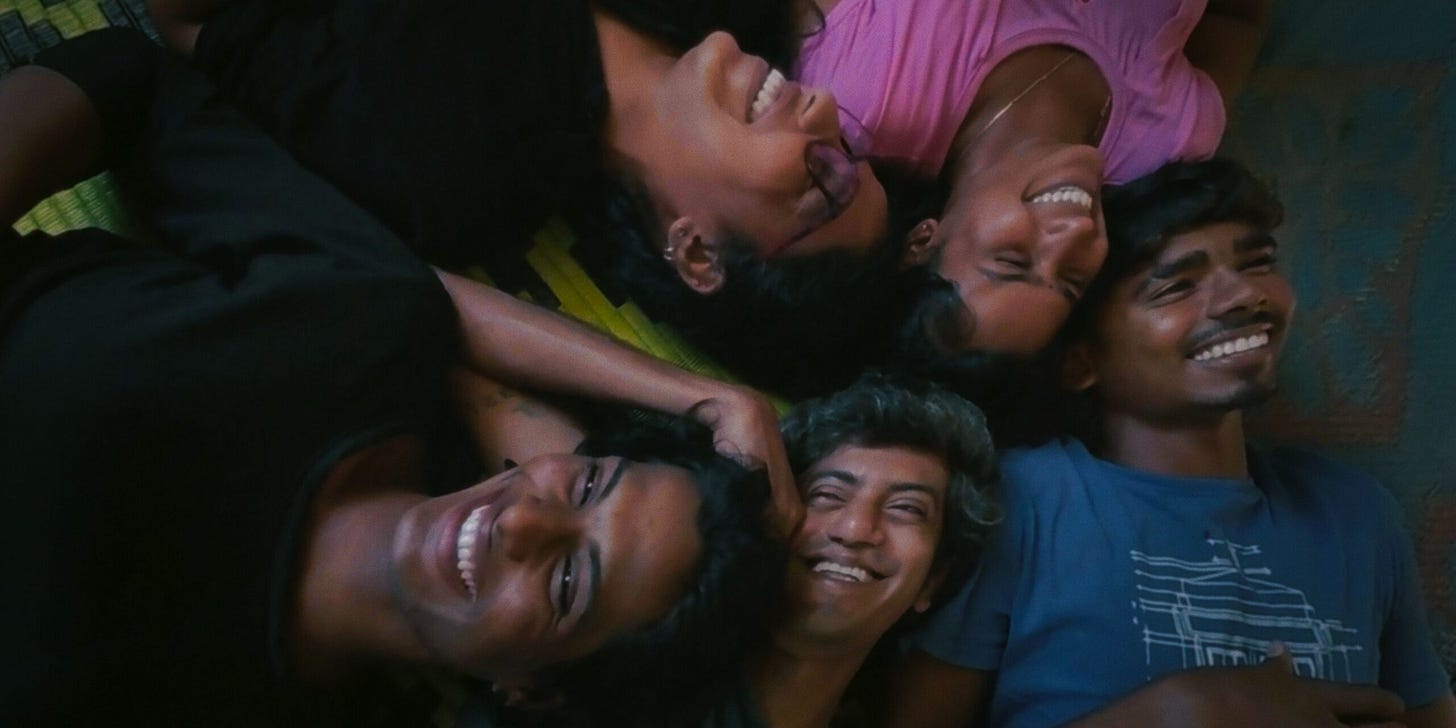Eduardo Williams made an incredible formal breakthrough with Parsi, his short from 2019 that I briefly reviewed earlier this year. Like his earlier films, Parsi immersed itself in the lives of queer communities from the global south, this time in Guinea-Bissau. This time, Williams handed his actors a 360-degree camera, creating a nearly first-person experience, a film crafted by the movements and perspectives of its subjects (imagine the tennis-ball POVs in Challengers, but for a length of a short). Flattening and framing the image in post, this technique gave Williams an unprecedented formal intimacy.
Williams extends the usage of this technique to feature-length in The Human Surge 3, weeding this formal innovation with the basic structure of his Human Surge project, which explores the interconnected lives of young queer people in three different countries, this time Sri Lanka, Peru, and Taiwan. While the first installment was split into three recognizable segments, each in a different country (Argentina, Mozambique, The Philippines), The Human Surge 3 freely mixes its locations. Characters teleport between from one country to the next and converse in different languages. These are films of complete fluidity, equally nihilist and liberated, where the world is a thin aesthetic veneer for some empty despair, and digital consciousness contaminates our physical perception. In a clear example of form following content, the fact that the entire film is framed in post is itself an example of the film’s pliable sense of reality.
Williams’ liberal use of distortion and digital effects forestalls accusations that this film is more of the same. His formal ingenuity creates consistently intriguing plays on perspective. At times, such as a nocturnal rave, the images have a first-person feel, while during early scenes in Sri Lanka, where the 360 camera roves around the rural community, the frame pixelates in different regions, the camera’s jittery motions unmistakably digital (comparisons to Google Maps are accurate). Avoiding any pat commentary on digitalization, Williams shows how these effects can be both liberating and oppressive. They can grant characters their romantic desires, melding their bodies together or giving them the ability to fly. Conversely, the distortions of the screen occasionally create impregnable digital prisons, where characters in the same space find themselves unable to reach each other. What’s foundational is that in 2023, the material and the digital are inextricable. An exemplary sequence occurs right before the film transitions into a transcendent digital playground. A naturalist static shot patiently observes a seemingly empty patch of the Amazon rainforest. After a monkey wanders onscreen, Williams’ camera begins to spin, not in a handheld manner, but with obvious mechanical consistency. Tilting and zooming towards the canopy, the natural world is reduced to thin pixelated abstraction.
While I initially responded to The Human Surge 3 as formal spectacle, what I fundamentally missed is that Williams collapses his formal maximalism with the extreme intimacy of his hangout-film improvisations. Like most of Williams’ previous films, The Human Surge 3 immerses us in its characters’ lives outside of work, consisting almost entirely of Van Sant-esque existential wandering and characters resting (or in some cases, in another Williams trope, suddenly fainting). The grandiosity Williams exerts from their daily lives is moving in the way Pedro Costa’s Fontainhas films are. There’s an undeniable queer sensibility I respond to in the freedom of Williams’ collaborations. The possibility enabled by the playfulness of the characters’ lives is The Human Surge 3’s dominant tonal counterpoint to its contemporary setting of late-capitalist dystopia. The loose correlation Williams makes between fluid sexuality and our increasingly entropic world is one of his more thought-provoking observations.
As the energy-laden title suggests, characters in the Human Surge 3 never emerge as individuals. Instead what Williams succeeds at is articulating different ways of being, not exactly the perspective of all of his characters, but capturing something productive and unnervingly contemporary in the atmospheres of their lives.
The Human Surge 3 is distributed by Grasshopper Film and in theaters now.





